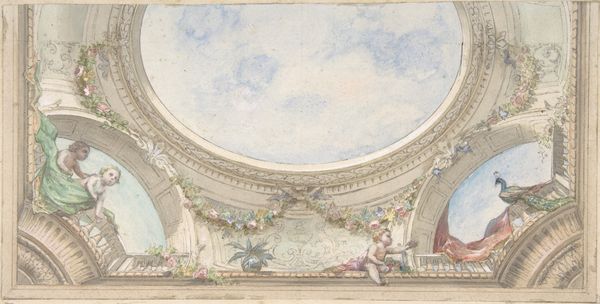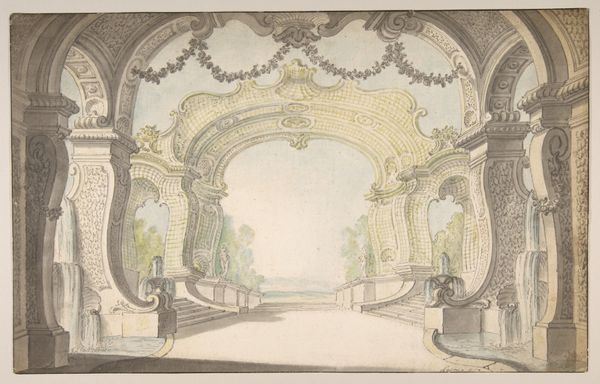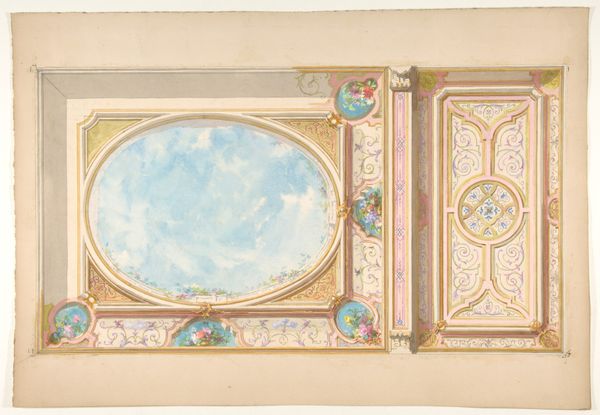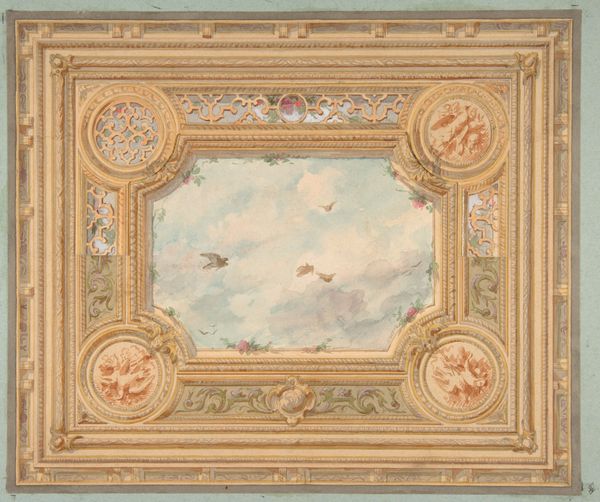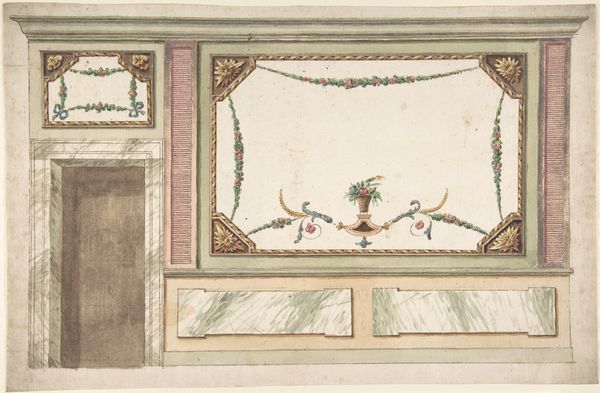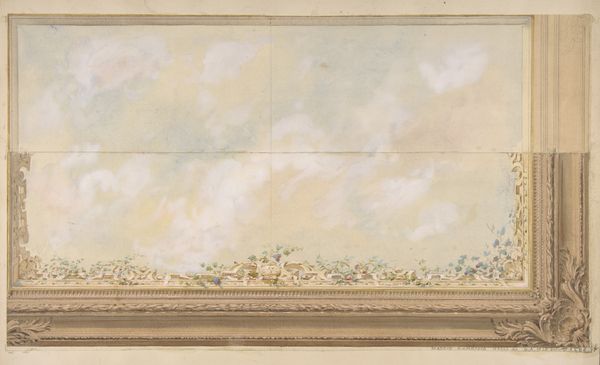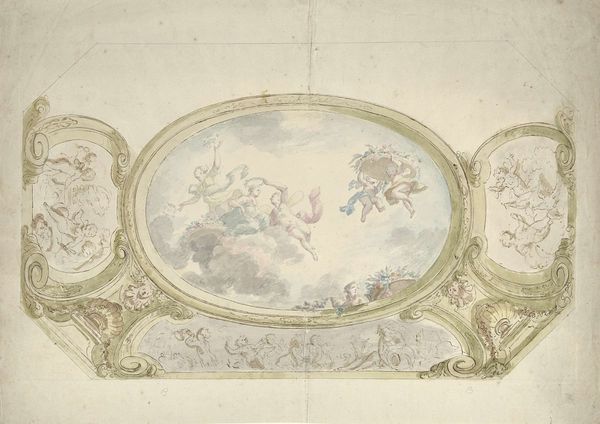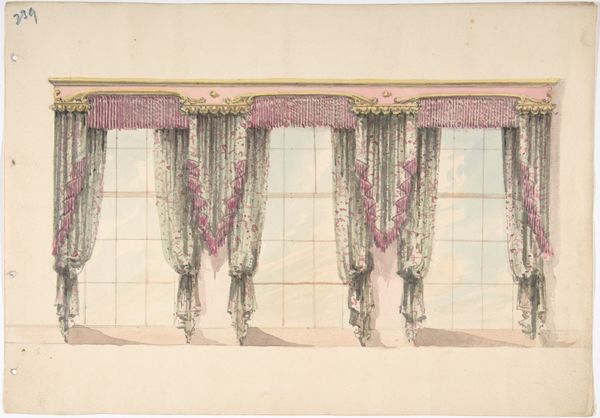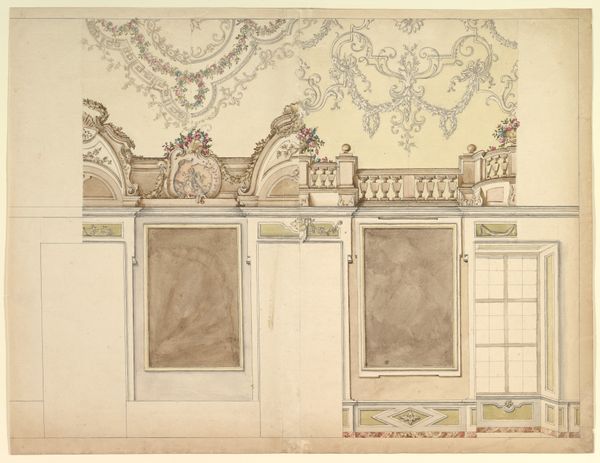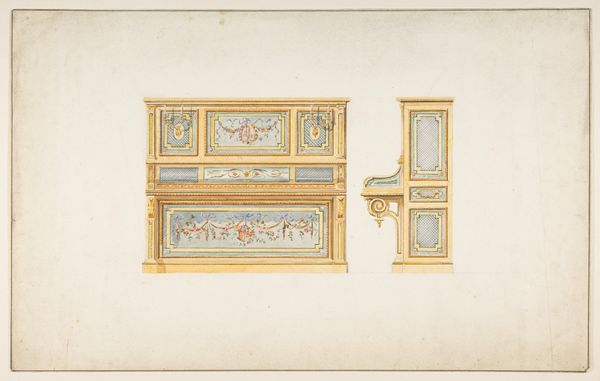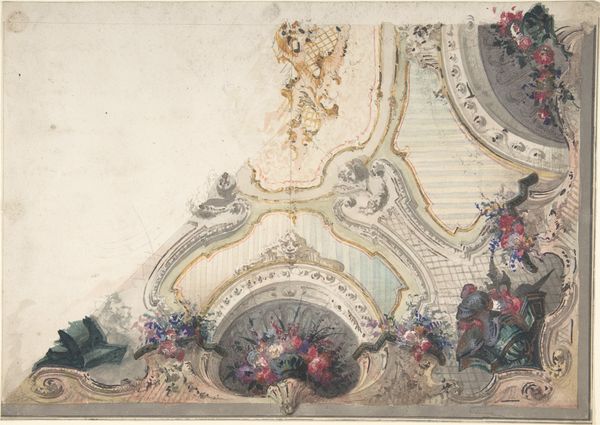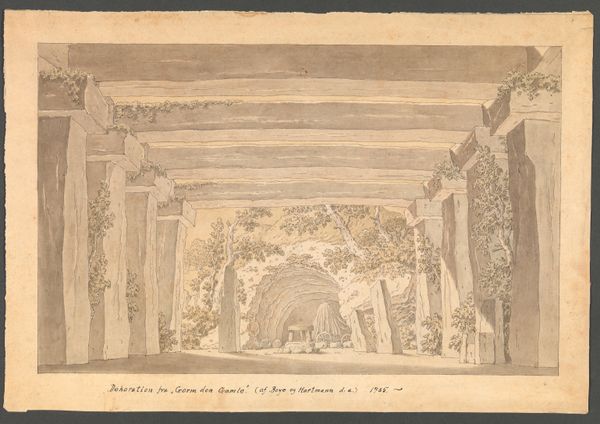
Design for a ceiling painted with a trompe l'oeil awning and putti in clouds 1850 - 1900
0:00
0:00
Copyright: Public Domain
Curator: What a whimsical world! It's as if the room has suddenly dissolved, replaced by an endless sky filled with playful cherubs. Editor: Exactly! We're looking at "Design for a ceiling painted with a trompe l'oeil awning and putti in clouds." It is a watercolor drawing by Jules-Edmond-Charles Lachaise, likely created between 1850 and 1900, here in the Met’s collection. You immediately keyed into its charm and it really demonstrates a popular aesthetic of that time! Curator: Trompe l'oeil! Oh, how the French love to trick the eye. And those plump little putti... they bring such a sense of carefree joy. But what does this say about the people who wanted to be surrounded by this? Were they yearning for a sort of escapism? Editor: I think that's spot on. The 19th century saw the rise of a bourgeois class keen to display wealth and culture. Murals like these created an illusion of grandeur, offering a glimpse into a world beyond the confines of their everyday lives. Imagine yourself in a Parisian salon. Now picture lying back, gazing up... Curator: It’s practically theater. I mean the entire setup—an awning painted in such detail that one wants to reach out and feel the imaginary breeze and the illusionistic opening up to that sky with those little cupids… I suppose this celebrates artifice itself. Editor: Indeed. And notice the technical skill— the delicate gradations of watercolor that give depth to the clouds, and how Lachaise mimics fresco techniques despite using paper. This highlights both technical proficiency and the democratization of art. This sort of “everyday grandeur” moves out of religious contexts, too. Curator: I'm curious. Do you think Lachaise believed in these allegorical figures or was it just fulfilling commissions? Editor: I imagine it was a blend of both. The market demanded such images, yes, but within the framework, the artist still gets to exhibit a particular way of seeing the world. Curator: I love that you highlighted the democratization of the arts here; after all, that is, in part, why we all find ourselves in this particular institution, standing here today! It all blends together to create moments of, well, magic! Editor: That magic relies so heavily on these figures for patronage and consumption of the Arts throughout our institutional structures. The romanticization of everyday spaces in tension with material access provides such fruitful reflection.
Comments
No comments
Be the first to comment and join the conversation on the ultimate creative platform.
